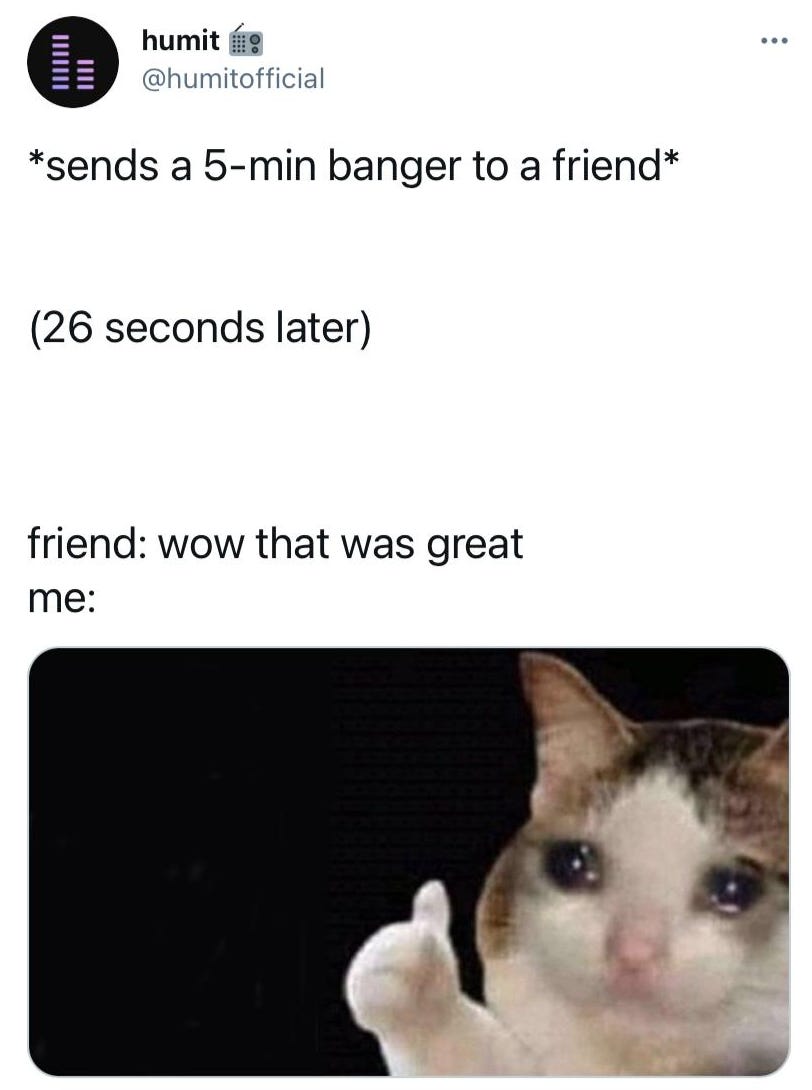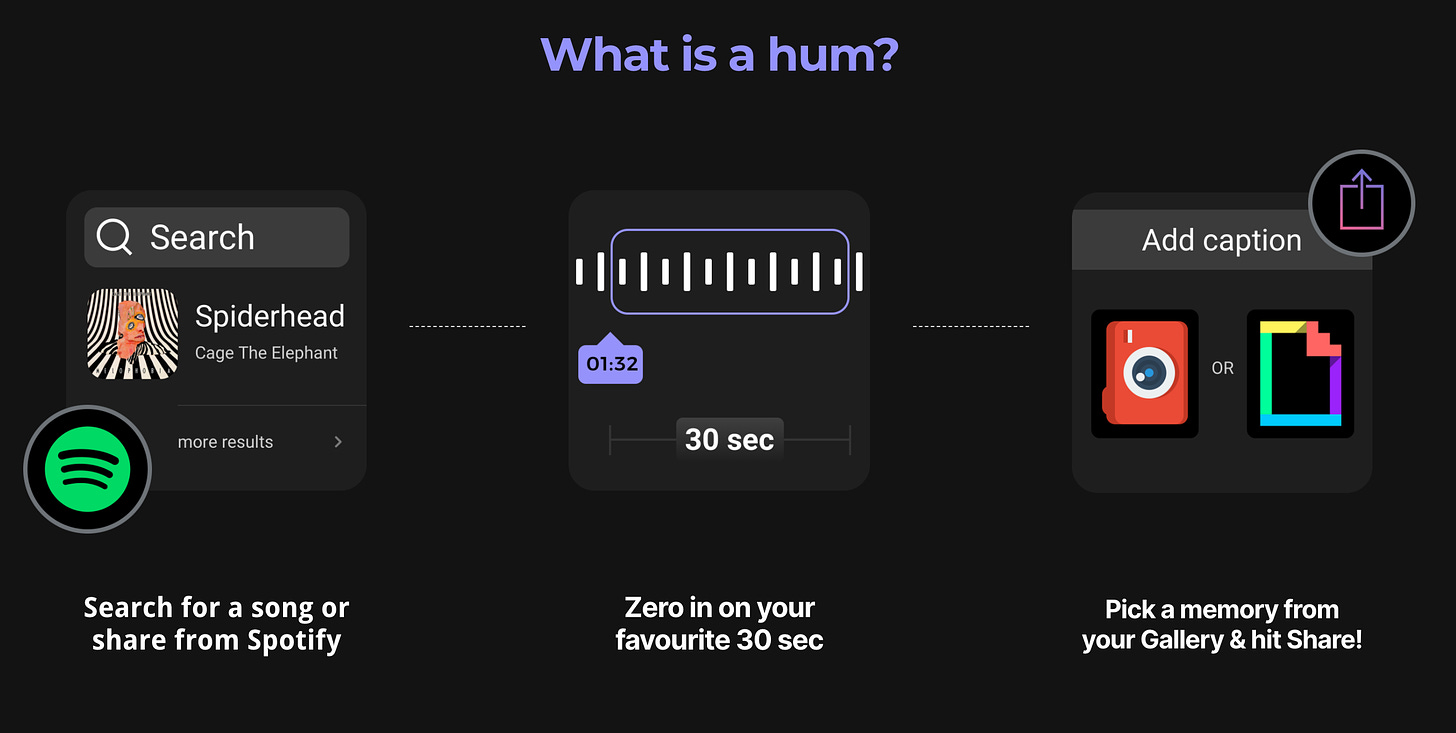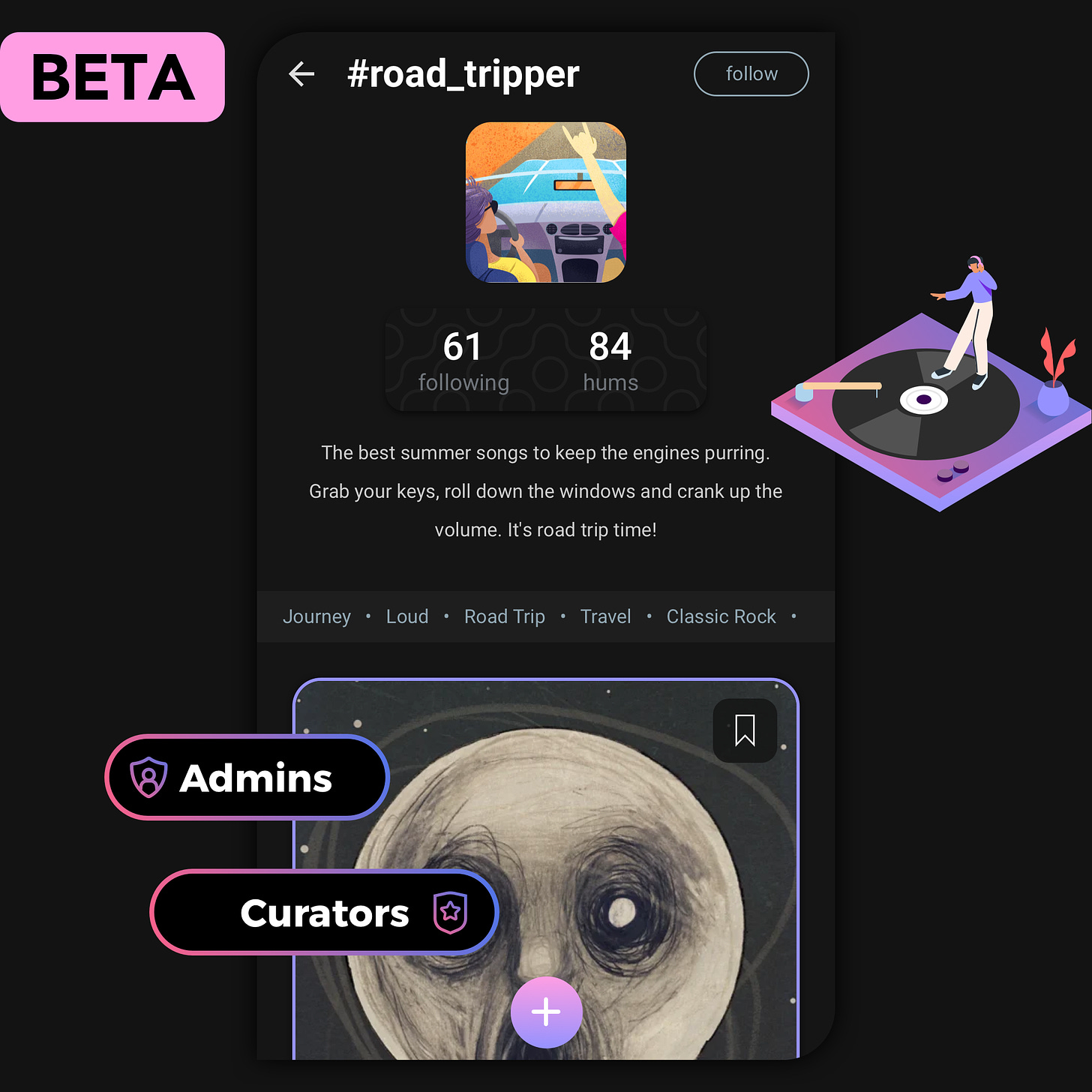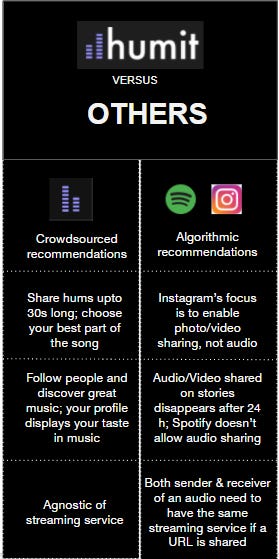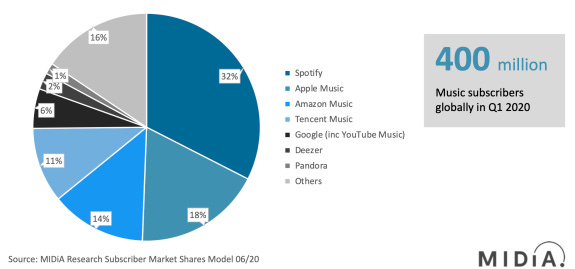How humit is trying to make music sharing super-addictive
humit lets you share 30 second snippets of powerful moments from your favorite song! Be it a verse, a guitar solo, or a beat drop.
Abhinav is a die-hard “Metalhead”. He is always on the hunt for new songs, as he loves to listen and share them with fellow metalheads. But beyond direct messaging the whole piece to someone on Instagram/WhatsApp, he doesn’t have many audio-sharing options.
Discovery is even more complicated. And there’s no communitization of music fans yet.
According to the findings of the Digital Music Study 2019, brought out by the Indian Music Industry (IMI), an Indian typically spends 19.1 hours per week listening to music.
With music being such a massive part of our lives, the incumbent streaming and audio sharing apps were not solving for music sharing and discovery. For Prithvi Sankar, co-founder of humit, this was a problem very close to his heart. We sat down with him where he elaborated on this insight and how that led to starting up humit.
What was the insight?
Ask anyone about their interests, and they’ll definitely talk about their taste in music. In our society, there is a lot of signaling around music. Even dating apps allow you to connect your Spotify and set your anthem.
However, all streaming services are designed for private listening. You still recommend your friends, “Hey Did you hear this song X?” instead of sharing it digitally.
This is where Prithvi found a product opportunity for a dedicated platform for audio sharing & discovery, especially bite-sized audio.
Prithvi broke that down to key sub-problems in the user journey while sharing music.
The current streaming services are not fundamentally designed for an audio experience, let alone shareability.
They measure their metrics in terms of eyeballs on the screen. You need to share the URL of the song. Then they force the user to switch between apps. And if you don’t use the same streaming app that the sender uses, well, tough luck. It’s irrelevant to you.
Even if both of you use the same streaming app, you have to sit through the entire song hoping to like it. Let’s admit it; song links are boring. No one has the time to listen to your 10-minute song recommendation in the hope of enjoying it.
Finally, there is no feedback loop to help the sender understand how many people consumed his recommended music and how many of them liked or disliked it.
What led to humit?
Prithvi and Rohit [Another Co-Founder] routinely discussed the idea in college but couldn’t get around to building something.
The problem? Building an entire catalog of music to start sharing.
So they launched a Facebook group for music fanatics called ‘Fine Tuning’ to start a platform for music sharing. It got good traction and now boasts over 1500 members.
But that was that. The two graduated from BITS Pilani and went into their day jobs as Product @ Ola and Data Scientist @ PayU, respectively.
Life was easy. But when they met a year and a half later, something had changed.
Streaming services like Spotify had now started putting out their APIs [for free], enabling access to their entire catalog of music/podcasts, etc. With the whole wave of short-form content— from microblogging [Twitter] to micro-videos [Vines & TikTok], a micro-content product for pure audio was missing.
Prithvi and Rohit now smelled meat in the idea. With no need to license content, an explosion in audio content consumption, and a community that loved to share music, the time was right to start up.
What is humit?
humit is a social networking app for music sharing and discovery. The app lets you share 30-second audio snippets of powerful moments from your favorite songs, AKA “hums.” These hums can then be conveniently sampled by your followers in an endless feed of fresh new music.
humit also has user moderated subreddit like forums called stations where you can find and post hums around a specific genre, theme, or topic.
Current Metrics & Future Roadmap
Since launching in October 2020, humit has scaled to nearly 150 DAUs & 750 MAUs. Over 2 lakh hums have been streamed so far.
Throughout the brief journey, the major challenge has been building the app and hiring the right people for it, motivated by the problem statement. But humit has done well on the product so far.
It got featured on Product Hunt in November last year. Product Hunt then did a shoutout for humit on Twitter, and they got 600 users in a day, giving a solid proof of concept.
Over time, humit would try adding podcast sharing as well. But given music contributes to 80% of all audio consumption, there is a lot of depth within music.
humit’s key target audience is college students. Hence the user acquisition strategy is focused on that segment. The startup has tied up with multiple colleges to host virtual music events, talent hunts, etc., to improve and acquire users.
Moat
Current audio consumption usually happens passively where the user is listening to music playing in the background. But humit’s core audience is active audio listeners. The app is geared towards active music discovery.
The long-term vision is to figure out how to replace algorithmic recommendations with crowdsourced recommendations.
Plus, being agnostic of streaming services becomes an advantage. The services act as a catalog of music. An Apple music user can share music with a Spotify user since 99% of the catalog is overlapping.
However, the biggest moat is social capital around music. Users come to this platform to
Seek validation of their taste in music
Discover music serendipitously through people they trust.
The other fish in the sea
When dealing with a social content space, you have to look at the Jobs to be Done framework. If a user wants to share music, what options does he have?
From that perspective, humit seems to compete on both streaming services and social platforms. Instagram instantly comes to mind if you think about media-sharing. However, it is not really customized to fulfill that need. It has a very limited catalog of songs. And you can’t simply go to someone’s profile and understand what songs they like. Plus, stories expire after 24 hours. Last.fm & SoundCloud are other platforms curated for audio with limited social features.
If you talk about Spotify, there’s a key difference between how the two things work.
Spotify focuses on machine learning-based recommendation systems. You only get suggestions similar to what you've already listened to. And you get stuck in an echo chamber. Spotify also tends to overexpose artists signed by them. The top 1% of artists account for 94% of content consumed, which leaves a long tail of struggling artists to get heard. Replacing this black-box algorithm with network effects will lead to the discovery of a lot of such artists.
humit wants to leverage crowdsourcing which presents a monetization opportunity. Prithvi believes such a platform could provide immense value to independent artists & labels.
Once you build a community of music fans, then there are a lot of things artists could gain out of it. Given that humit is asset-light & armed with 1000s of data points about user’s music consumption, humit can become a meaningful product for artists & users alike, and that’s where the “pot of gold” lies. [Music marketing is a huge business in itself].
Why may it not fly?
One thing worrying Prithvi is - What if Spotify just stops supporting APIs? And the paranoia is rightly placed. It only made sense to transition the idea from a Facebook group to a product when streaming services opened their APIs for products like humit to be integrated with them. If that happens, startups like humit will have to directly reach out to music labels and license content, which is an expensive affair.
But that will only happen if they see humit as a threat. If that happens, counterintuitively, it is a good sign for the company. It means it has built something of incredible value, making it difficult for them to pull the plug.
As long as that status quo is maintained, Prithvi & co. can be bullish.
Market Size
As of Q1 2020, the total userbase of all streaming services combined stands at 1.2 billion, out of which 400 million are paid users.
An Indian typically spends 19.1 hours per week listening to music, much higher than the global average of 18 hours. This equates to about 2.7 hours—or the equivalent of listening to 54 three-minute songs—daily, according to the findings of the Digital Music Study 2019, brought out by the Indian Music Industry (IMI). [Source]
Learnings from the journey
Prithvi focuses on self-introspection before taking the plunge—“Ask yourself, will you enjoy doing this for the next five years?”
Adding on to that, he encourages budding entrepreneurs to consider these four factors.
Take costs into consideration — Understand the financial implications of starting up. Starting up may look “cool,” but money burns out faster than passion.
Mental health sacrifice— Your mind never switches OFF when you are a founder. Hence, if you are not passionate about your product, the road ahead may not be as mentally rewarding as you think.
Seek a purpose - Having access to capital or having a strong team, or even “starting up” shouldn’t be the reason to start up. Find your “Why.”
The best time to start was yesterday - Don’t fret too much on “is this the right time to startup.” While timing is crucial to startup success, overthinking leads to inaction, and having a failed startup rather than no startup is always better.
While trying to build the app for humit, no one knew how to code. They thought, “how difficult would it be” and went headfirst into the problem. They watched a couple of coding tutorials on YouTube and slowly & steadily got the hang of it.
“Just start building!” is the mantra at humit.
How did you raise funds?
Prithvi & team built humit on the side, along with their jobs over the past year. To really go ahead and work for it full time, they needed conviction. They always wondered— “Is this a feature for an existing streaming platform, or could this be a product in itself?”
The answers to that came from having casual conversations with ex-founders, investors, and angels over LinkedIn. The team wasn’t pitching humit but trying to understand this space and wanted to know—How should someone go about building a product like humit? What do investors expect from an early-stage startup which is looking to raise funds?
Fortunately, even before the team decided to quit their day jobs, an angel got interested in their idea & offered to invest a significant amount of money.
#learningswith SU: LinkedIn is a great tool to reach out for advice/funding. People reply as long as you give them something interesting enough. First yes is the most difficult, then it becomes relatively easier.
Where will this funding be used?
The funds will primarily be used for product development & user growth milestones. The target is to establish some early signs of product-market fit and reach 1 lakh DAUs in a year and a half.
Team
The three co-founders are friends and batchmates from BITS Pilani.

Among the three co-founders, Product is handled by Prithvi, Rohit works on App Development & Ishan is responsible for Backend Infrastructure, scaling & growth.
Pradyumn is leading the design team at humit.
How to hire?
There is a strong emphasis at humit that everyone in the team should be a heavy user of humit. Unless they find the fundamental value proposition in humit for themselves, they wouldn’t be able to think from a user's point of view.
Prithvi says
In the early stage, it is important to pay well and have a lean team. Hire 1 great employee instead of 3 average employees. If you are building a consumer tech product, it will always be compared against Snapchat, Instagram, etc. You need to match the level of stalwarts and hence incredible developers & designers are needed.
humit is hiring for key roles across engineering, growth, and marketing. Check out Careers @ humit for more details.
You can download the humit App for Android here. [iOS App coming soon 😉]
If you loved reading this article, you can subscribe to the newsletter or follow us on Medium. [Yes, we are on Medium too!]







